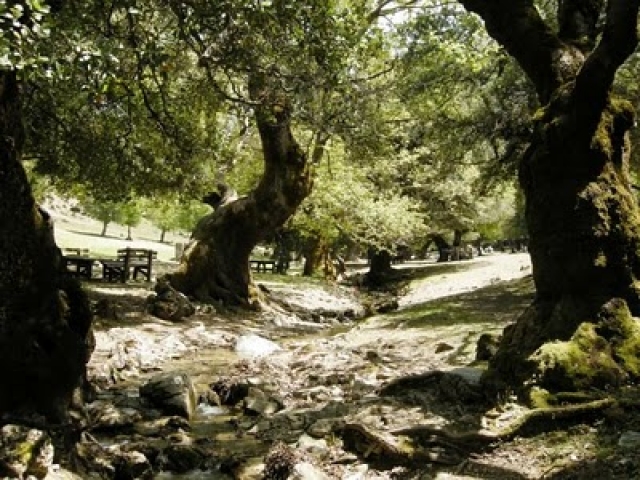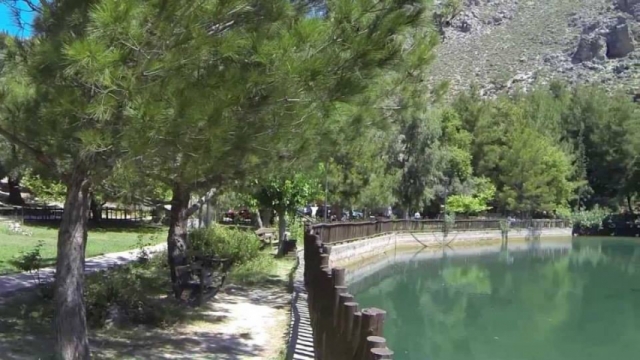Press here.
Places near Analipsi
The Varsamonerou Monastery lies in the surrounding fields of the village Voriza, 54.5 kms from Heraklion City. The monastery is abandoned and, though its cells have been destroyed, its church has some of the most remarkable wall paintings in Crete. These paintings show the high artistic level of the different schools in 15th century Crete.Nowadays the church is known as Agios (Saint) Fanourios but it is also dedicated to Our Lady of the Way and to Saint John: through the years, several extensions were added to the original nave.
The oldest section of the church, dedicated to Our Lady of the Way, has wall paintings that date back to the 14th century. This north nave contains, among others, the outstanding representations of Saint John from Damas, Saint Onoufrios and the Dormition; in the south -and more recent nave- dedicated to Saint John the Forerunner, one can admire several scenes from the Passion (The Entrance to Jerusalem, the Last Supper, the Treason of Judas), the Crucifixion and the Epitaph.
The arch and eastern section of the church are from the 15th century (1400-1407).
All these wall paintings form an important part of the Cretan heritage during the first centuries of Venetian rule. In the Varsamonerou Monastery there were other remarkable icons, painted by the famous artist Angelos, and the beautifully carved iconostasis of the monastery is now in the Historical Museum of Crete, in Heraklion. This iconostasis is an outstanding example of religious art.The monastery, famous for all the art representations it possessed, was also known for its studies: a great number of books were to be found in its library. Not only religious books but ancient Greek texts as well: a catalogue, dating back to 1644, gives us the names of several philosophical treaties by such writers as Xenophon, Eschynis, Plutarch, etc.The monastery was abandoned at the beginning of the 18th century.
Large parts of the murals from that era are also preserved. It is probable that it was a convent that was deserted after a natural disaster. On the eastern slope of the mountain, around 500 m from Agios Nikolaos one can find the small cave of Aghios Efthimios.In the Venetian years it was glebe of the Varsamonero monastery and was called Aghios Nikolaos in Karopouliana. The 1644 census indicates that it was a herding area.The glebe was preserved throughout the Ottoman period, while in the end of the 19th century a group of nuns settled in Agios Nikolaos. Many of the cells were renovated and the surrounding land, which was substantially large, started being cultivate.
The temple was closely connected to the religious activity in the region during the 14th-15th century and to the Monstery of Varsamonero. It might have been a chapel of the Monastery. In the older times, it was a hermitage.
Next to the cave-temple there are caves and cavities that also served as hermitages. The location has all the characteristics of a hermitage site: it is isolated, far away from inhabited areas and only a hard-to-access path leads there, which is also dangerous due to frequent earth and rock falls.








